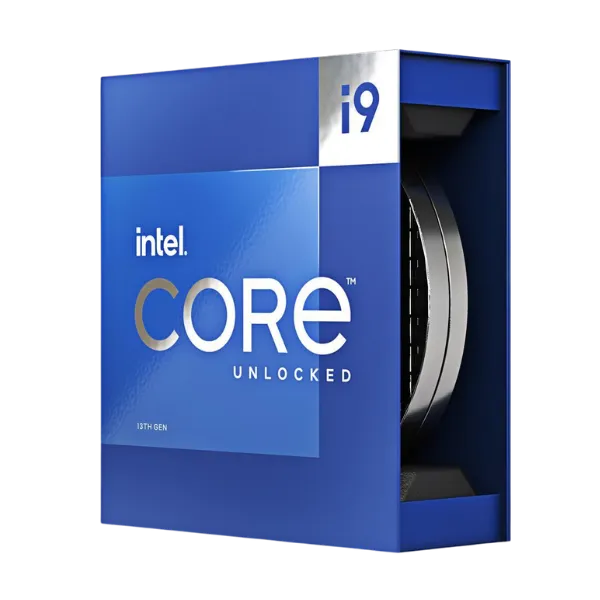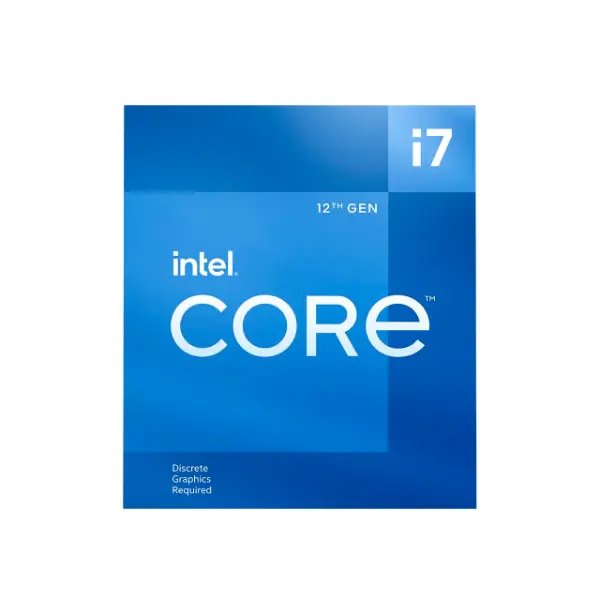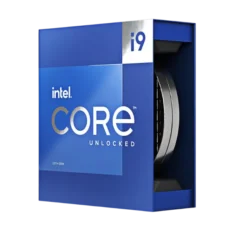Intel i9-13900 Desktop Processor
Core Architecture and Performance
The i9-13900 features a hybrid architecture with a total of 24 cores, divided into 8 Performance-cores (P-cores) and 16 Efficient-cores (E-cores), supporting 32 threads1. This configuration allows the processor to handle multiple tasks simultaneously, optimizing both performance and power consumption. The P-cores are designed for high-intensity tasks such as gaming, video editing, and 3D rendering, while the E-cores manage background tasks and less demanding applications, ensuring a smooth and responsive user experience.
The base clock speed for the P-cores is 2.0 GHz, and for the E-cores, it is 1.5 GHz1. However, the processor can achieve a maximum turbo frequency of up to 5.6 GHz, thanks to Intel’s Turbo Boost Technology1. This dynamic adjustment of clock speeds ensures that the processor can deliver peak performance when needed, while conserving energy during less demanding tasks.
Cache and Memory Support
One of the standout features of the i9-13900 is its 36 MB Intel Smart Cache1. This large cache size helps reduce latency and improve data retrieval speeds, contributing to overall system responsiveness. The processor also supports up to 192 GB of DDR5-5600 MT/s or DDR4-3200 MT/s memory, providing flexibility for users to choose between the latest high-speed memory or more cost-effective options1.
Integrated Graphics
The i9-13900 comes with integrated Intel UHD Graphics 770, which is capable of handling everyday graphics tasks and light gaming1. While dedicated graphics cards are recommended for more intensive gaming and professional graphics work, the integrated GPU provides a reliable solution for users who do not require high-end graphics performance.
Advanced Technologies
Intel has equipped the i9-13900 with several advanced technologies to enhance performance and efficiency. Intel Thermal Velocity Boost (TVB) allows the processor to automatically increase clock speeds beyond the maximum turbo frequency when thermal conditions are favorable1. This feature ensures that the processor can deliver extra performance during short bursts of high-demand tasks.
Intel Turbo Boost Max Technology 3.0 further optimizes performance by identifying the best-performing cores and prioritizing critical workloads to these cores1. This targeted approach to workload management helps maximize performance for single-threaded applications and improves overall system efficiency.
Power Consumption and Thermal Management
The i9-13900 has a base power consumption of 65W, which can increase to a maximum turbo power of 219W under heavy loads1. This power profile is designed to balance performance and energy efficiency, making the processor suitable for a variety of desktop configurations. Effective thermal management is crucial for maintaining optimal performance, and users should ensure that their cooling solutions are adequate to handle the processor’s thermal output.
Use Cases and Applications
The Intel Core i9-13900 is versatile and well-suited for a range of applications. For gamers, the combination of high core counts and fast clock speeds ensures smooth gameplay and quick load times. Content creators will appreciate the processor’s ability to handle complex tasks such as video editing, 3D rendering, and graphic design with ease. Professionals who require reliable performance for tasks such as software development, data analysis, and virtual machine management will find the i9-13900 to be a capable and efficient choice.
Conclusion
In summary, the Intel Core i9-13900 is a powerful and versatile processor that offers a compelling mix of performance, efficiency, and advanced features. Its hybrid architecture, large cache, and support for high-speed memory make it a strong contender for a wide range of high-performance computing needs. Whether you’re a gamer, content creator, or professional, the i9-13900 is designed to deliver the performance and reliability you need to tackle your most demanding tasks.
Specifications
| Product Collection | 13th Generation Intel® Core™ i9 Processors |
| Code Name | Products formerly Raptor Lake |
| Vertical Segment | Desktop |
| Processor Number | i9-13900 |
| Lithography | Intel 7 |
| Total Cores | 24 |
| Performance-cores | 8 |
| Efficient-cores | 16 |
| Total Threads | 32 |
| Max Turbo Frequency | 5.60 GHz |
| Intel® Thermal Velocity Boost Frequency | 5.60 GHz |
| Turbo Boost Max Technology 3.0 | 5.50 GHz |
| Performance-core Max Turbo | 5.20 GHz |
| Efficient-core Max Turbo | 4.20 GHz |
| Performance-core Base | 2.00 GHz |
| Efficient-core Base | 1.50 GHz |
| Cache | 36 MB Intel® Smart Cache |
| Total L2 Cache | 32 MB |
| Base Power | 65 W |
| Max Turbo Power | 219 W |
| Max Memory Size | 192 GB |
| Memory Types | DDR5 5600 MT/s, DDR4 3200 MT/s |
| Max Memory Channels | 2 |
| Max Memory Bandwidth | 89.6 GB/s |
| ECC Memory Supported | Yes |
| GPU Name | Intel® UHD Graphics 770 |
| Graphics Base Frequency | 300 MHz |
| Max Dynamic Frequency | 1.65 GHz |
| Graphics Output | eDP 1.4b, DP 1.4a, HDMI 2.1 |
| Execution Units | 32 |
| Max Resolution (HDMI) | 4096 x 2160 @ 60Hz |
| Max Resolution (DP) | 7680 x 4320 @ 60Hz |
| Max Resolution (eDP) | 5120 x 3200 @ 120Hz |
| DirectX Support | 12 |
| OpenGL Support | 4.5 |
| OpenCL Support | 3.0 |
| Multi-Format Codec Engines | 2 |
| Quick Sync Video | Yes |
| Clear Video HD | Yes |
| # of Displays Supported | 4 |
| Device ID | 0xA780 |
| DMI Revision | 4.0 |
| Max DMI Lanes | 8 |
| Scalability | 1S Only |
| PCI Express Revision | 5.0 and 4.0 |
| PCIe Configurations | Up to 1×16+4, 2×8+4 |
| Max PCIe Lanes | 20 |
| Socket | FCLGA1700 |
| Max CPU Configuration | 1 |
| Thermal Solution Spec | PCG 2020C |
| TJUNCTION | 100°C |
| Package Size | 45.0 mm x 37.5 mm |
| Max Operating Temperature | 100 °C |
| Gaussian & Neural Accelerator | 3.0 |
| Thread Director | Yes |
| Deep Learning Boost | Yes |
| Speed Shift | Yes |
| Adaptive Boost | Yes |
| Thermal Velocity Boost | Yes |
| Turbo Boost Max 3.0 | Yes |
| Turbo Boost 2.0 | Yes |
| Hyper-Threading | Yes |
| Intel® 64 | Yes |
| Instruction Set | 64-bit |
| Instruction Set Extensions | SSE4.1, SSE4.2, AVX2 |
| Idle States | Yes |
| SpeedStep® | Yes |
| Thermal Monitoring | Yes |
| Volume Management Device | Yes |
| vPro® Eligibility | Enterprise, Essentials, Platform |
| Threat Detection Tech | Yes |
| AMT | Yes |
| ISM | Yes |
| Remote Platform Erase | Yes |
| One-Click Recovery | Yes |
| Hardware Shield | Yes |
| Secure Key | Yes |
| Control-Flow Enforcement | Yes |
| Memory Encryption | Yes |
| AES Instructions | Yes |
| OS Guard | Yes |
| Trusted Execution Tech | Yes |
| Execute Disable Bit | Yes |
| Boot Guard | Yes |
| MBEC | Yes |
| SIPP | Yes |
| VT-rp | Yes |
| VT-x | Yes |
| VT-d | Yes |
| EPT | Yes |





Reviews
There are no reviews yet.